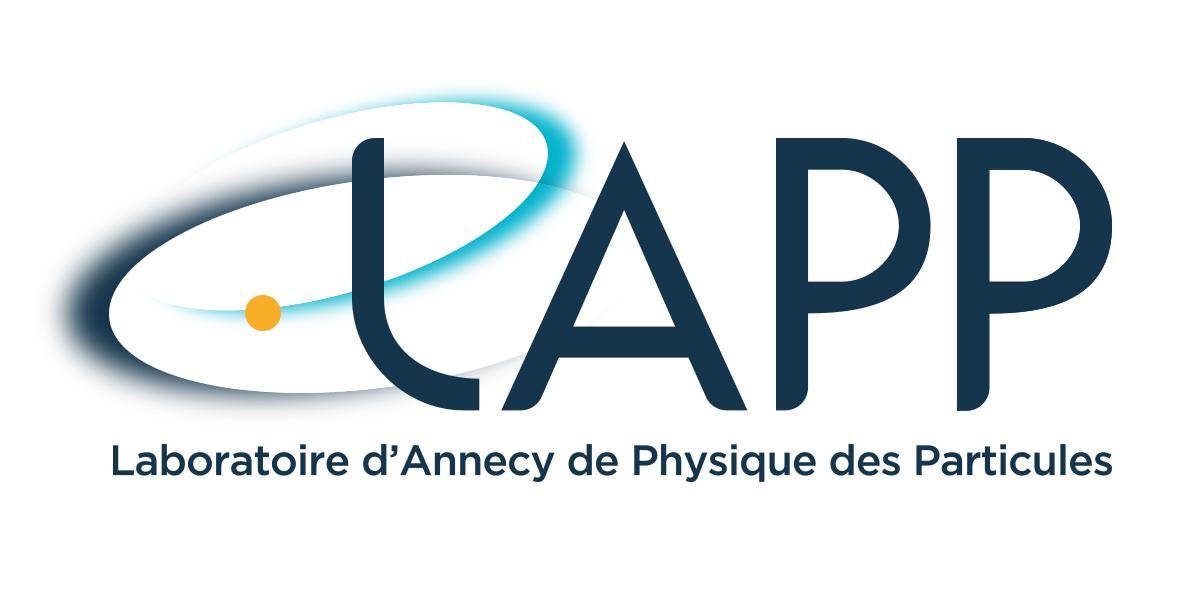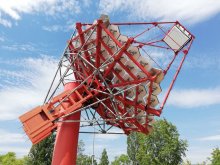NectarCAM sees its first atmospheric cascade events
The NectarCAM camera saw its first atmospheric cascade events in the Berlin Adlershof sky on the night of May 22-23, 2019, after arriving on the site of the MST (Medium Size Telescope) prototype on May 16, 2019 from the Research Institute for Fundamental Laws of the Universe of the French Atomic Energy and Alternative Energy Commission (IRFU/CEA) in Saclay. NectarCAM is one of the cameras that will equip the homes of the Cherenkov Telescope Array (CTA) very high energy observatory’s medium-sized telescopes.
NectarCAM is an international consortium of 16 laboratories involving France, Spain and Germany. The National Institute of Nuclear and Particle Physics (IN2P3/CNRS), the National Institute of Universe Sciences (INSU/CNRS) and the CEA are the three main actors in this camera project to equip the medium-size telescopes (MST) of the CTA network (Cherenkov Telescope Array), which will include about 100 telescopes of different sizes, (Large-Sized Telescope – LST, Medium-Sized Telescope – MST, Small-Sized Telescope – SST) spread over two observation sites, one in each hemisphere.
 After the necessary ground checks, it was successfully loaded into the telescope by teams from the National Institute of Nuclear and Particle Physics, CEA/IRFU and Deutsches Elektronen-Synchrotron (DESY). Close cooperation between all the teams of the NectarCAM consortium, without forgetting the telescope team, made it possible to achieve this first objective, which is essential for the project, before deployment on site at the end of 2020 in the Canary Islands.
After the necessary ground checks, it was successfully loaded into the telescope by teams from the National Institute of Nuclear and Particle Physics, CEA/IRFU and Deutsches Elektronen-Synchrotron (DESY). Close cooperation between all the teams of the NectarCAM consortium, without forgetting the telescope team, made it possible to achieve this first objective, which is essential for the project, before deployment on site at the end of 2020 in the Canary Islands.
The ultra-sensitive camera consists of 1855 photomultipliers (or pixels) distributed over 265 modules. It is able to detect low energy cosmic gamma rays ( 100 GeV) containing only a few photoelectrons per pixel thanks to a fast, low-noise electronics and a highly time-selective trigger (a few nanoseconds) allowing background noise to be rejected. The dynamic measuring range will allow energies of the order of 10 TeV to be achieved. IN2P3, a founding member of the NectarCAM consortium, is a major contributor to the construction, with eight laboratories involved. They ensure in particular the development of the front electronics for reading photomultipliers, the processing and transfer of data, the design of the camera’s mechanical structure and interior layout, the environmental control and monitoring system (T°, light, humidity, etc.), the dating of events as well as the calibration system and the dedicated source.
The LAPP is responsible for the camera controller and system engineering of the NectarCAM project.


